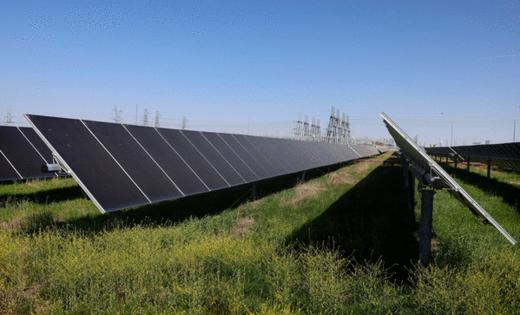John M. Crisp: Some good news on climate change (sort of)
Published in Op Eds
As oceans rise, glaciers melt and some parts of the world flood while others bake in drought, good news about climate change is scarce. Thus, a report last week from Ember Energy Research is worth noting.
Ember is an energy think tank registered in England and Wales. It makes no secret of its aim “to accelerate the clean energy transition with data and policy.” But its 36-page report is short on polemic and long on highly technical data, which is why, even though the report was covered in mainstream media, it might fall between the cracks of our climate conversations.
Here’s the upshot: Using credible methodology, Ember compares world energy demand and consumption during the first half of 2025 with the first half of 2024. The most remarkable finding is that the growth in wind and solar power generation exceeded the growth in global demand by 109 percent.
During the same period, coal generation fell by .6%, while solar and wind grew by 7.7%, leading to this finding: “As a result, renewables’ share of global electricity rose to 34.3% (from 32.7%), while coal’s share fell to 33.1% (from 34.2%).”
In other words, for the first time, electrical energy derived from renewables exceeded the amount derived from coal. Ember calls this a “crucial turning point,” the “beginning of a shift where clean power is keeping pace with demand growth.”
At the least, the report indicates that renewable energy is a credible alternative to fossil fuels, rather than a mere liberal, feel-good, green-new-deal pipedream.
Growth in solar energy generation was particularly strong. At least seven countries generated 20% or more of their energy from solar during the first half of 2025, with Hungary leading the way (30%) and Greece and the Netherlands not far behind (25%).
The Ember report pays special attention to the big energy players—China, India, the E.U. and the U.S.—which together accounted for 63% of global energy demand and 64% of CO2 emissions during the first half of 2025.
The percentage of fossil fuel generation and related emissions decreased in China and India, as the development of renewable energy sources outpaced the growth of energy demand. China was responsible for 55% of the increase in global solar generation and 82% of the growth in wind energy. The numbers for India are similar.
Perhaps you can see where this is going: In the U.S., electricity demand increased by 3.6% during the first six months of 2025, but unlike in much of the world, solar and wind growth offset only 65% of the increase. The gap was filled by increased coal generation.
Unfortunately, the good news from Hungary and Greece and much of the world, as reflected in the Ember report, is undermined by the fact that the world’s largest economy—the U.S.’s—remains deeply committed to fossil fuel energy. And the U.S. is exhibiting considerable contempt for the world’s worthy efforts to reduce the gasses that are clearly warming the climate to dangerous levels.
In fact, last month President Donald Trump announced to the assembled United Nations that climate change is the “greatest con job ever perpetrated on the world.” Climate scientists are “stupid people,” and green energy initiatives are a “scam.”
The climate issue is strange: It should be all about science and engineering. But for many people—maybe most—the prospect of climate change deeply involves their psyches and their emotions, especially their fears and hopes. Thus, despite the science, people are often inclined toward undue optimism about the climate or toward skepticism or even outright denial.
In other words, because we have a hard time thinking rationally about climate change, we often ignore or deny the science.
This element of climate change always reminds me of what Albert Einstein said about the “unleashed power of the atom”: It “changed everything save our modes of thinking, and thus we drift toward unparalleled catastrophe.”
_____
ABOUT THE WRITER
_____
©2025 Tribune Content Agency, LLC
























































Comments